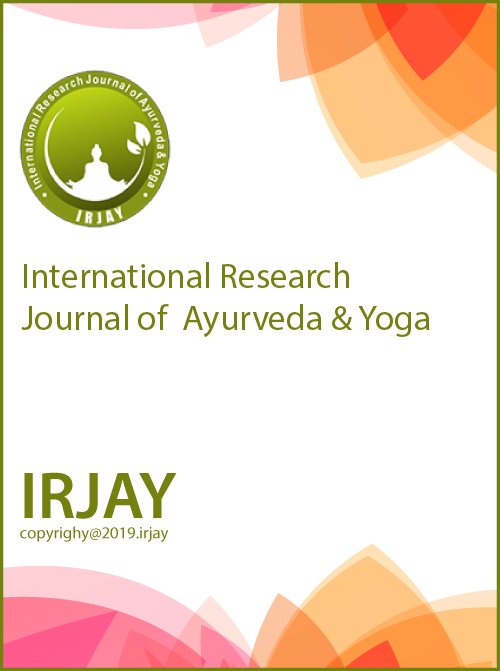Ayurvedic Approach to Female Pelvic Organ Prolapse w.s.r. to Prasramsini Yonivyapad: A Case Study
DOI:
https://doi.org/10.48165/Keywords:
Ayurveda, pelvic organ prolapse, prasramsini yonivypada, majuphalAbstract
Background: One of the 20 Yonivyapad described by Acharya Sushruta as a condition in which any irritation to the Yoni causes it to prolapse is Prasamsini Yonivyapad. This syndrome is linked to both primary and secondary uterine prolapse. When dealing with the problem of genital prolapse, surgical procedures cannot always be used or, in some situations, avoided. In such circumstances, conservative approaches may be recommended. Ayurvedic Acharyas have recommended numerous therapeutic approaches that have been used since ancient times and have proven beneficial outcomes in many cases of prolapse. Main observations: In present case study, a young female aged 38 years consulted the Ayurvedic OPD of M.M.M. Govt. Ayurved College& Hospital, Udaipur with complaints of something coming out of vagina, lower abdominal pain, white discharge per vagina and burning micturition suggestive of second degree uterine prolapse confirmed by bimanual examination. It can be correlated to prasramsini yonivypada in Ayurveda. So, we planned an ayurvedic treatment regime with the goal of improving the symptoms of patient. Result- The patient was treated with local Application of Majuphal churn and Shubhra bhasm with some oral medications. Only traditional Ayurvedic medicines were used during the treatment. Patient’s condition was assessed through improvement in symptoms. Therefore, this study was conducted to evaluate one of the treatment regimens of pelvic organ prolapse. Conclusions: The study concluded that ayurvedic medication was significantly effective in treating Prasramsini yonivypada (female pelvic organ prolapse).
Downloads
References
Malhotra P, Jeffcoate’s Principles Of Gynaecology, Jaypee Brothers Medical Publishers, New Delhi, 7th Edition 2008. 2. Raafat S Barsoom, MD Chief Editor: Bruce M Lomd, Uterine Prolapsein Emergency Medicine Aug 15 2018.Https://Emedicine.Medscape.Com/Article/797295
Padubidri VG. Dutta Textbook Of Genecology. Haryana; Thomson Press India Ltd; 2014. Pg 201.
Tripathi P , Vangasen Samhita Chowkhamba Sanskrit Series Office.1998
Tewari PV. Ayurveda Prasuti Tantram And Stree Rogam. Varanasi: Chaukhambha Orientalia; 2018
Acharya YT, Sushruta Samhita, With Ḍalhana Nibandha Samgraha Commentary, Varanasi, Chaukamba Surabharathi Prakashana,2007.

